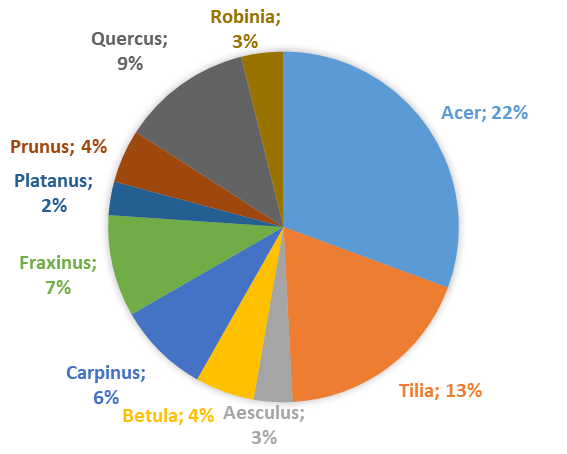Interactive guideline "Urban trees under climate change" - an online simulation module for estimating the growth and ecosystem services of the most common tree species in Bavarian cities
Background
Urban trees provide a variety of ecosystem services, especially regulatory ones such as improving microclimate, carbon storage, or reducing runoff. In the course of climate change, their role in cities is becoming increasingly important. Within the framework of the sub-projects CityTree I and II (duration: 2014 - 2018) of the Centre for Urban Nature and Climate Adaptation, a process-oriented model that simulates the growth and ecosystem services of urban trees in Bavaria depending on climate and site conditions was developed. Based on this, a guideline for urban trees in Bavaria was created in the following years, in which simulation results are presented not only for the current climate, but also for a possible future climate.
The next step is now to expand this guide to include other important urban tree species and make it available in digital form. This would enable users to carry out simulations for selected periods of time via an input and output mask for individual trees and their site conditions. Such a platform could support planners, practitioners and authorities in the planning, maintenance and preservation of urban tree populations and would help mitigate the effects of climate change in Bavarian cities.
For example, the expected growth size (crown height and width) and ecosystem services such as carbon storage and cooling effect could be quickly determined for a tree species such as the small-leaved lime tree at a typical street location and compared with other tree species in order to make an optimal tree species selection and estimate the importance of site-improving measures for tree growth such as reducing soil sealing.
Aims
The aim of this project is to extend the process-based growth model CityTree for a huge number of tree species found in Bavarian cities.
The model will be prepared in a way that growth and ecosystem services can be interactively requested online via the ZSK websites for individual trees and their site conditions.
